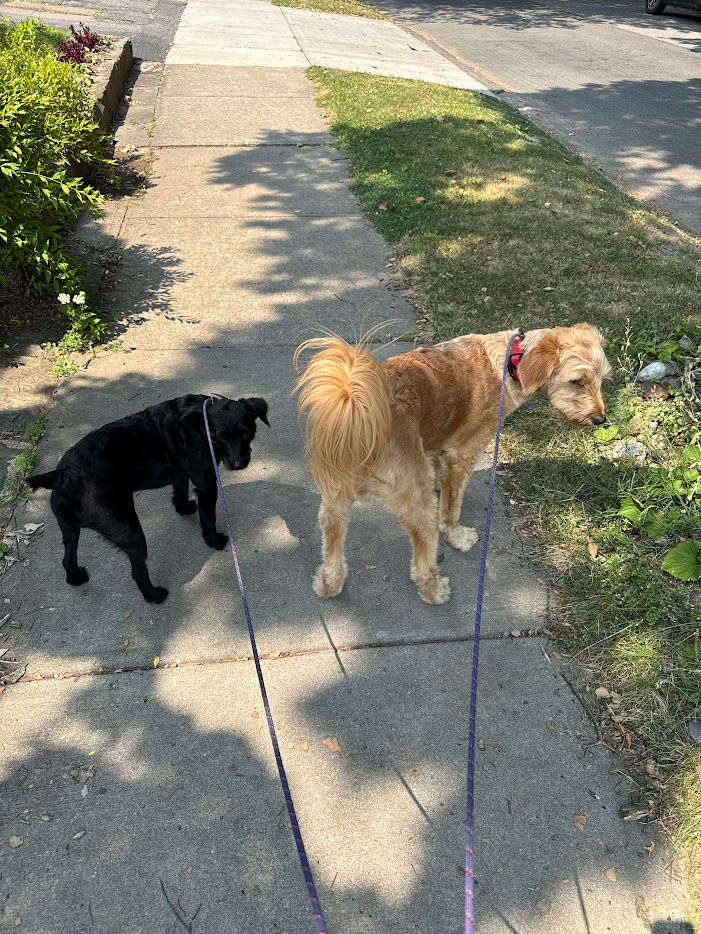Crate Training: Building Trust, Safety, and Harmony with Your Dog
- empoweruk9
- Sep 30
- 3 min read
Bringing a dog into your life — whether it’s a wiggly new puppy or a wise older companion — is one of the most beautiful journeys you can take. But alongside the joy comes responsibility, questions, and sometimes even worries. How do I keep my dog safe when I can’t be watching? How do I teach them to respect my home without stifling their spirit? How do I give them boundaries while still letting them feel free and loved?
For many families, crate training is part of that answer. When approached with patience and compassion, a crate becomes more than just a box with four walls. It becomes a safe space, a retreat, a den — something that comforts your dog while also giving you peace of mind.
Why Dogs Want a Safe Space
Imagine being a puppy in a brand-new world — the smells, the noises, the wide open rooms that feel endless. It can be exciting, but also overwhelming. A crate, introduced gently, can feel like a warm little bedroom: predictable, safe, cozy.
Older dogs feel this too. For a rescue or senior dog, a crate can ease the anxiety of a big transition. It says: “Here is your spot. No one will bother you here. You’re safe.”
What Crate Training Offers the Owner
Crates aren’t just about dogs — they’re about you, too. Dog owners often dream of a harmonious home where they can relax without constantly worrying about chewed shoes, accidents, or messes when they step away.
Crate training helps you:
Prevent accidents during housebreaking by giving structure and routine.
Protect your belongings (and your dog from dangerous mischief) when you’re out.
Feel peace of mind knowing your pup has a secure spot when you leave the house.
When your home feels calmer and safer, you show up for your dog with more patience, love, and presence.
Boundaries That Build Trust
It can feel hard at first to put your dog in a crate. Many owners worry: “Will they think I don’t love them?” But in reality, setting gentle boundaries is one of the most loving things you can do. Dogs thrive when they understand what’s expected of them.
The crate isn’t about keeping them “away.” It’s about giving them structure that actually helps your bond grow stronger. A dog who knows their safe spot will relax more easily, trust more deeply, and behave with more confidence. And a human who trusts that their pup is secure can approach training and play with more joy and less stress.
The Loving Way to Crate Train
Crate training should always be about love, not punishment. Here’s a compassionate path forward:
Introduce it slowly. Toss in treats, place a soft blanket, let them explore with the door open. Make it a positive, choice-based experience.
Associate it with good things. Feed meals in the crate or give special chews only inside. This way the crate feels like “the place where good things happen.”
Keep it fair. Never overuse the crate — dogs need companionship, exercise, and freedom. Think of it as their bedroom, not their prison.
Listen to your dog. Whining, fear, or pacing means it’s time to slow down, make adjustments, and reassure them.
Seeing It Through Your Dog’s Eyes
From your dog’s point of view, the crate is a space where they can finally exhale. The world can be loud and unpredictable, but the crate is constant. It smells like them, it feels like home.
From your point of view, it’s a way to live more peacefully together. You can leave for work without guilt, welcome guests without stress, and enjoy your dog without always being “on guard.”
Crate training, done right, serves both hearts at once.
A Balanced, Compassionate Choice
There are some cautions: a crate should never replace love, exercise, or companionship. It should never be a punishment. But when used thoughtfully, it gives you both what you need: safety, structure, trust, and freedom.
Because at the end of the day, crate training isn’t about confinement. It’s about creating harmony — a home where your dog feels safe, where you feel calm, and where love flows more easily in both directions.
If you’re starting crate training, approach it with patience and kindness. Celebrate the little victories. Remember: your dog isn’t just learning boundaries — they’re learning that you are their safe place, their guide, their family.
If you’d like guidance on how to introduce crate training in a way that’s compassionate, effective, and tailored to your dog, we’d love to help. At Empower U K9, we focus on relationship before obedience — giving you the tools and understanding to create harmony in your home.
Contact Empower U K9 today to learn our process and set your dog up for success. Together, we’ll make crate training a positive experience that strengthens your bond and builds lasting trust.


